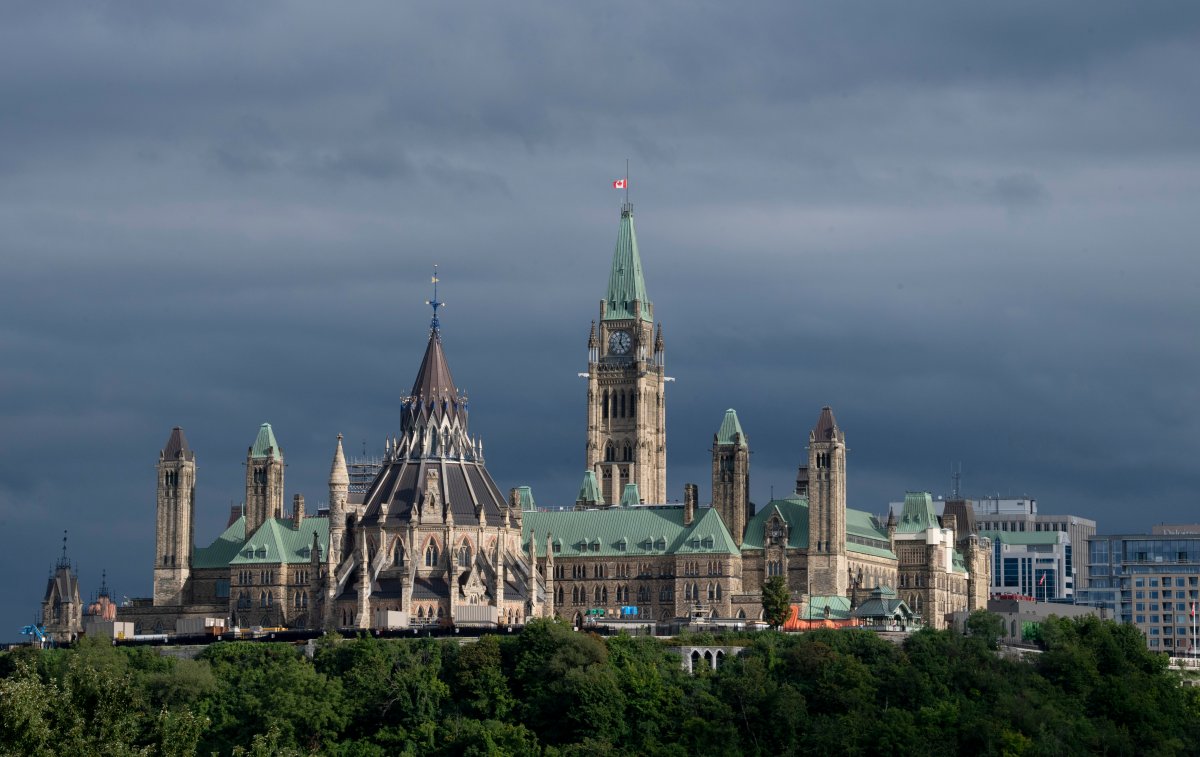Tests of how MPs can vote virtually are underway ahead of the planned return of Parliament Wednesday.

The Liberal minority government is set to deliver a speech from the throne to lay out an updated version of its coronavirus pandemic response plan, but also how it intends to guide the country forward afterwards.
Doing parliamentary business, however, needs the House of Commons, and how MPs will be able to do their work in the months ahead is a matter of ongoing negotiations between all the parties.
The House of Commons sat in a modified hybrid form over the summer, with some MPs in person and others online, and some committees met.
Most of the meetings in the Commons chamber were of a special committee on COVID-19, which allowed for debate but severely restricted action. When legislation was voted on, it was by a limited number of MPs, so they could stay apart from each other.

But what’s on tap starting Wednesday is a full resumption of the legislature’s operations.
That widens the scope and challenge of having Parliament meet: the sittings will be daily, all committees can be convened, the government must respond to certain timelines to produce documents and, perhaps most crucially, there needs to be a way for members to vote.
Given that the speech from the throne will be followed by a confidence vote, that testing is just beginning on a method for doing so this week is concerning, said NDP MP Rachel Blaney, who worked on the House of Commons committee tasked with coming up with a plan for a pandemic Parliament.
“When you’re rushing at the last minute, it sets the tone,” she said, laying the blame squarely at the feet of the government for not beginning talks on the issue sooner.
Given it is a minority Parliament, protecting and ensuring voting can function flawlessly is crucial, Blaney said, especially if the first test will be the vote on the throne speech.

Get weekly health news
“We should not be in this situation,” she said. “We could have been testing, having conversations, working things out for weeks.”
While the Opposition Conservatives had been clamouring for a full in-person resumption of Parliament, their hopes were dashed late last week when leader Erin O’Toole tested positive for COVID-19. He remains in isolation with mild symptoms, and can’t be present in the Commons this week.
He will preside virtually, however, over a caucus meeting with his MPs on Tuesday.
Bloc Quebecois Leader Yved-Francois Blanchet has also been diagnosed with COVID-19 and is also in isolation.
How and when both leaders will deliver their responses to the speech is part of negotiations. It’s not written in stone that they must do so on the same day, and while the speech is allocated six days of debate, those days don’t have to be consecutive. So, they could be scheduled in such a way to allow the leaders to appear in person when they’re cleared by public health, and then the vote would take place after.
In the meantime, the business of Parliament can continue.

Leaders’ absences will be one way the impact of the pandemic is affecting the pageantry of the throne speech that kicks things off.
Gov. Gen. Julie Payette will still receive a 21-gun salute when she arrives at the Senate building — itself a temporary home for the upper chamber, while Parliament’s Centre Block is renovated — where she will deliver the speech on behalf of Prime Minister Justin Trudeau‘s government.
She’ll be serenaded by a military band, reduced by more than one third the usual size to just five members.
And she’ll inspect a ceremonial guard of 15 members of the Canadian Armed Forces — all of whom will be wearing masks and standing the requisite two metres apart.
Once in the Senate chamber, Payette will speak to a much smaller and somewhat less illustrious crowd than usual.
The Senate’s senior protocol officer has notified senators that no special guests will be allowed in the chamber.
The public galleries will be empty, apart from just four reporters who’ll be allowed in.
Most senators will not have their usual front-row seats. At least 15 of the 105 senators must be in the chamber to achieve quorum. But the others are being advised to watch the proceedings on television or on their computers.

Same goes for MPs.
Ordinarily, the usher of the black rod and other Senate officers march over to the House of Commons, bang on the door and summon MPs to attend the Queen’s representative in the Senate. The MPs then walk over to the Senate, where they crowd behind the brass bar at the entrance to the chamber to listen to the speech.
Government whip Mark Holland is negotiating with opposition parties to curtail the number of MPs who will make the trip between chambers.
“The numbers will be kept to a bare minimum,” he says.
In a tweet Monday evening, Manitoba MP Dan Mazier said he was attending a simulation for online voting.
“It is a complete gong show,” he wrote.
Mazier said there were “many technical problems,” adding that some MPs were unable to vote.
Others, he said, had to vote more than once.
“And the liberals want this to be the new Parliament?” the tweet reads. “Democracy is at risk.”
-With files from Global News






Comments